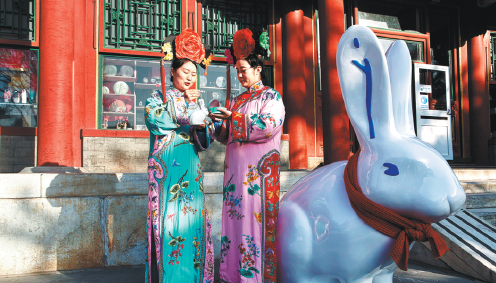

Post-outbreak trends
Popular creative cultural products share several commonalities, according to Liu Xiaobo, co-founder of the Beijing BES Cultural Creative Development Co, which has provided services pertaining to such products to scenic spots and museums.
"These creative cultural products cater for the core demands of consumers. Some even offer interactive experiences, and can become a topic of conversation," Liu says.
He illustrates with the example of the "blind boxes" produced and sold by Henan Museum in Henan province. It fulfills the customer's dream of becoming an amateur archaeologist, simply by digging into a clod of earth with a small shovel and a brush, to discover replica treasures inside.
It sold out several times in early December, after a post sharing someone's exciting "excavation" experience suddenly went viral on the internet.
"Compared with national and provincial museums, it's difficult for those with less fame, like the city museums, to make themselves stand out in the market," he says. "If consumers are unfamiliar with a museum, it's difficult to persuade them to buy its creative cultural products, so marketing counts for a lot."
Liu says when tourists visit a museum, they like to purchase souvenirs after having an emotional connection with the exhibits. However, this kind of buying has been hit hard by the fact that museums across the country were closed for some time last year due to the outbreak of COVID-19.
The good news is that the pandemic mainly affected the physical shops run by the museums, rather than their online shops, "as the demand for such products is still there", Liu adds.
"With more disposable income than before, Chinese consumers are willing to pay for such cultural and personalized items," he says.
Tmall's data reveals that, as the economy was recovering in the second half of 2020, the sales of such products on Tmall started to increase more quickly. In 2020, the total sales figure rose by 120 percent over 2019.